5 ways to embrace the trend for decorative trim this season with Samuel & Sons
Decorative trim is the interior designer’s secret to characterful interiors – and the vibrant and versatile Taos collection from Samuel & Sons has us teeming with ideas for how to use it
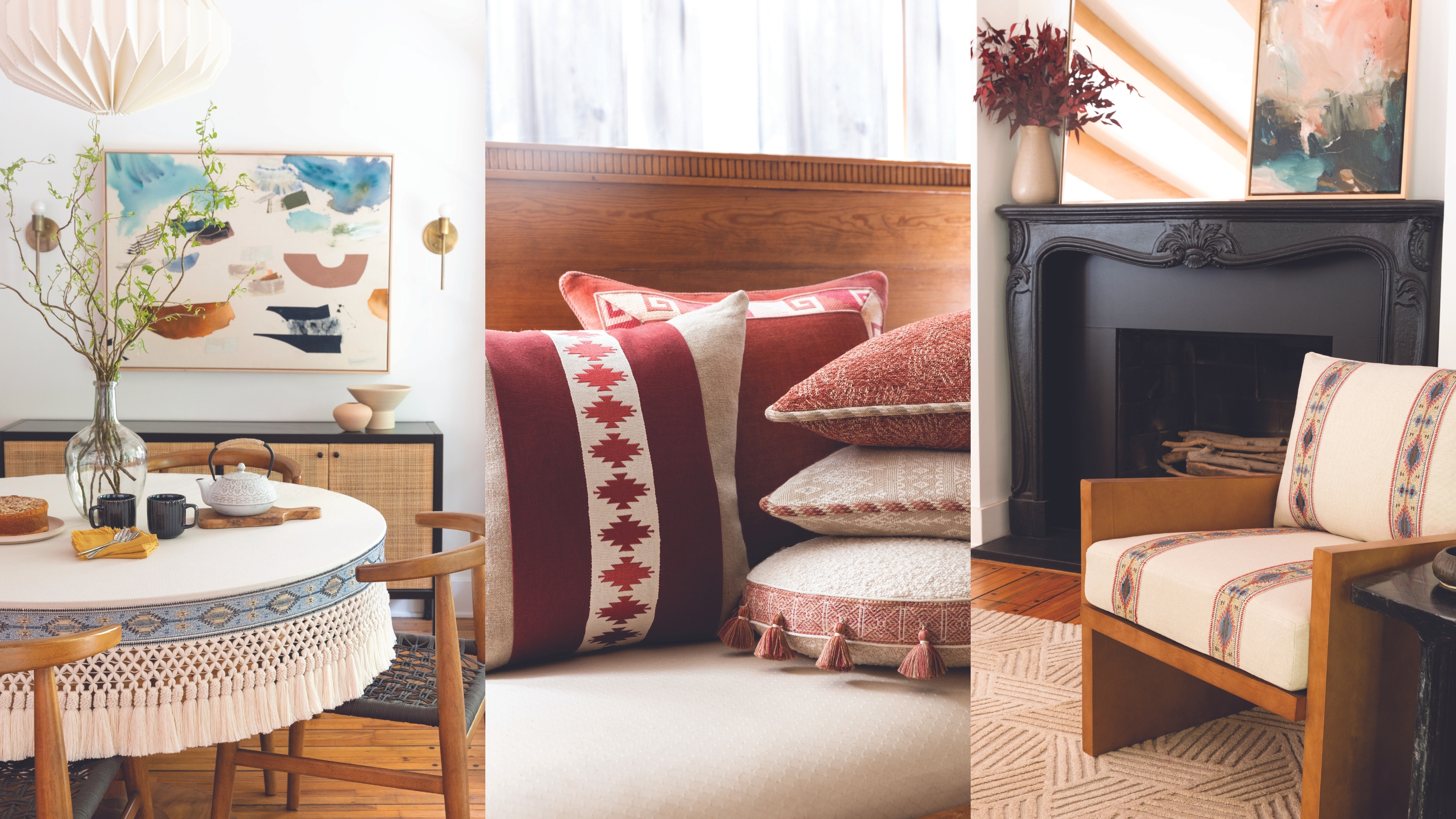
Successful interior design is all about the detail: paying attention to textures, to tones, to the way shape and pattern interacts in a room. So it follows that decorative trim is a highly effective way to add character and interest: subtle contrasting piping on a sofa, or a nostalgic fringed detail on a lamp, might be the detail that takes a scheme to the next level. And with designers and tastemakers wanting homes that are a true reflection of their personal style, decorative trim is the perfect way to create a bespoke interior.
For Samuel & Sons, the New York-based company renowned for their finest quality luxury trimmings – from tassels and fringes to borders and braids – it’s also an opportunity to get creative. Their latest collection of artisanal passementerie, Taos, draws inspiration from the enchanting American Southwest: each of the designs is informed by the region’s distinctive patterns, motifs and rich colour combinations, as well as its grounding in art, textile and handicraft. Embroidery stitching techniques, complex weaving, velvet, and felt appliqué pay homage to the craftsmanship so integral to this part of the world.
Inspired by this dynamic new collection, we spoke to the Samuel & Sons executive creative director, Milton De Paul, and their VP of design, Marisa Gutmacher, to find out just how we can tap into the trend for decorative trim.
How to use decorative trim in your interiors
1. Introduce pattern to a plain tablecloth
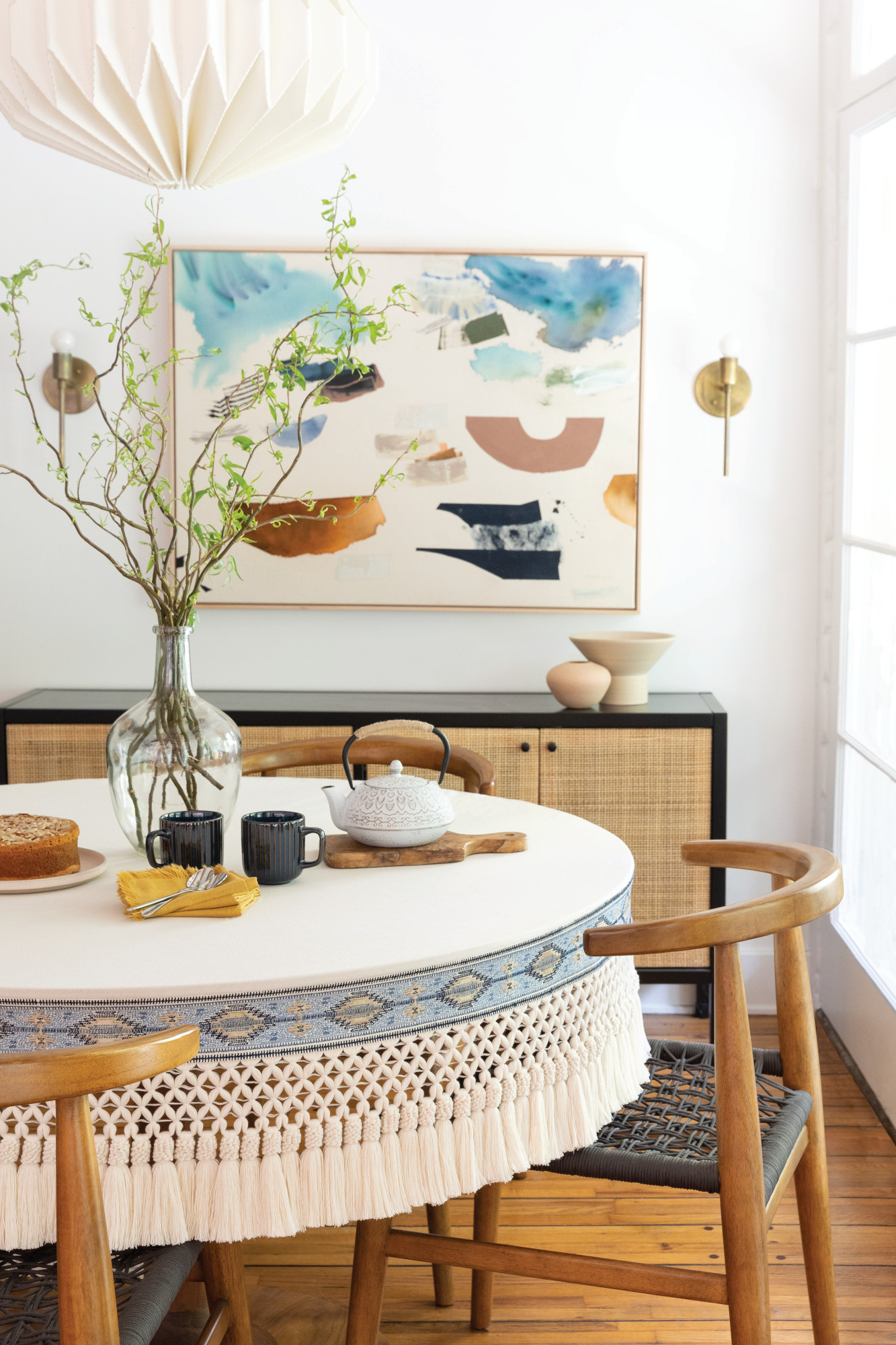
While a simple cotton or linen tablecloth gives your dinnerware a chance to take centre stage, a trim is a simple addition that will elevate the space in a subtle way. You might even decide to pair it with armchairs updated in the same fabric for a cohesive look – or mix and match for a scheme that’s a little more eclectic.
Here, the tablecloth is finished in the Sedona border in Blue Sky, a pale-hued velvet appliqué border with a kilim pattern enhanced by intricate tweed embroidery – part of the new Taos collection from Samuel & Sons. A Bali cotton tassel skirt fringe with playful tassels adds texture and movement to the scheme.
2. Transform upholstery for a one-of-a-kind piece
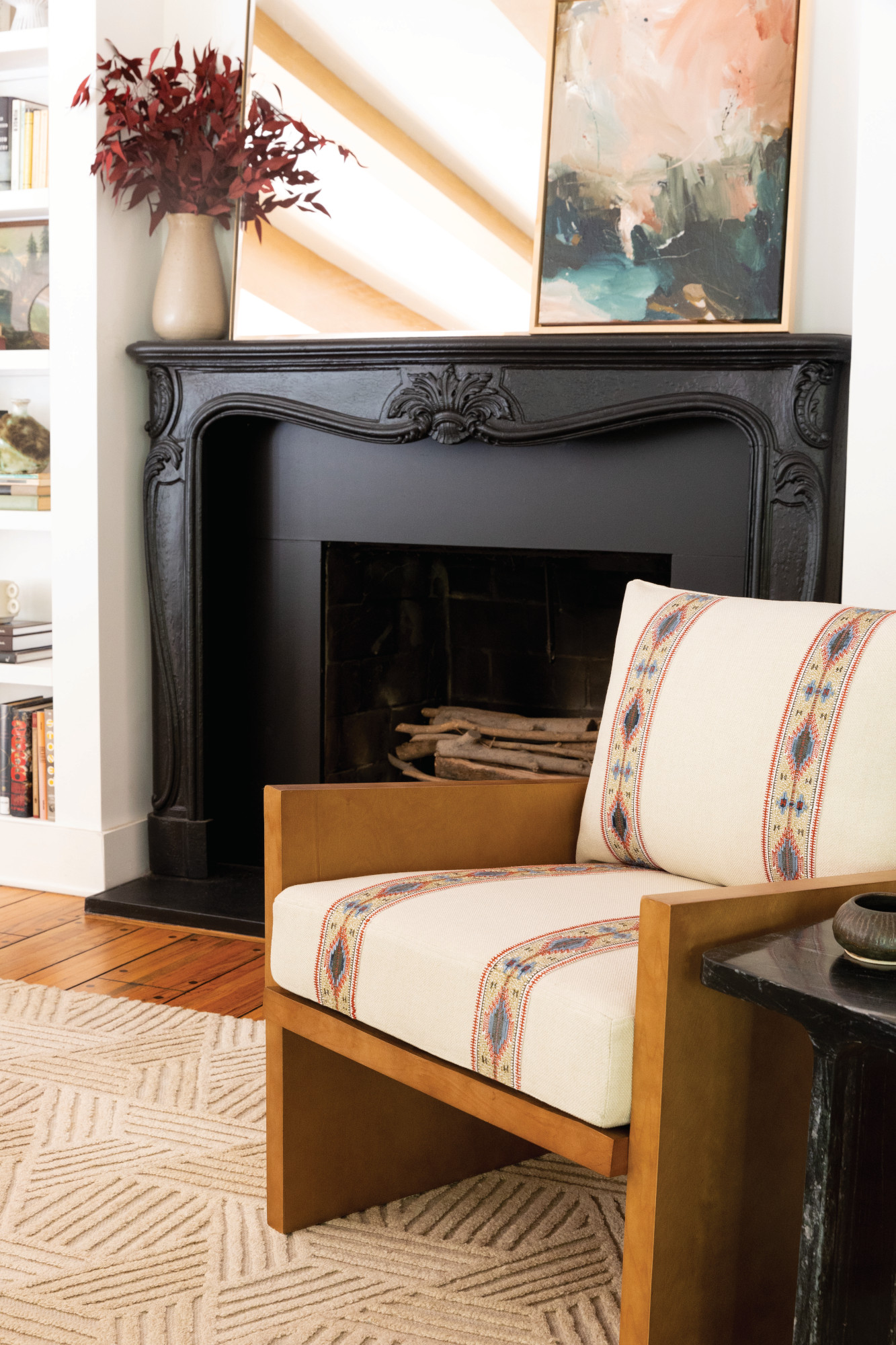
For less than the cost of a bespoke fabric covering, you can achieve the same custom look by upgrading your existing plain upholstery with decorative trimming. Run delicately patterned stripes down the centre of an armchair (the design pictured here is the Sedona border in Horizon) or edge a stool with a ribbon of colour; the joy of trimming is in the creative freedom it gives you.
‘Historically, using trim on upholstery has a more functional purpose, but that doesn’t mean that you can’t get creative,’ explains Milton De Paul. ‘I always think: why would you use a self welt when you could use a contrasting piping or brush fringe to add visual interest to a piece of furniture?’
3. Add contrast to your curtains
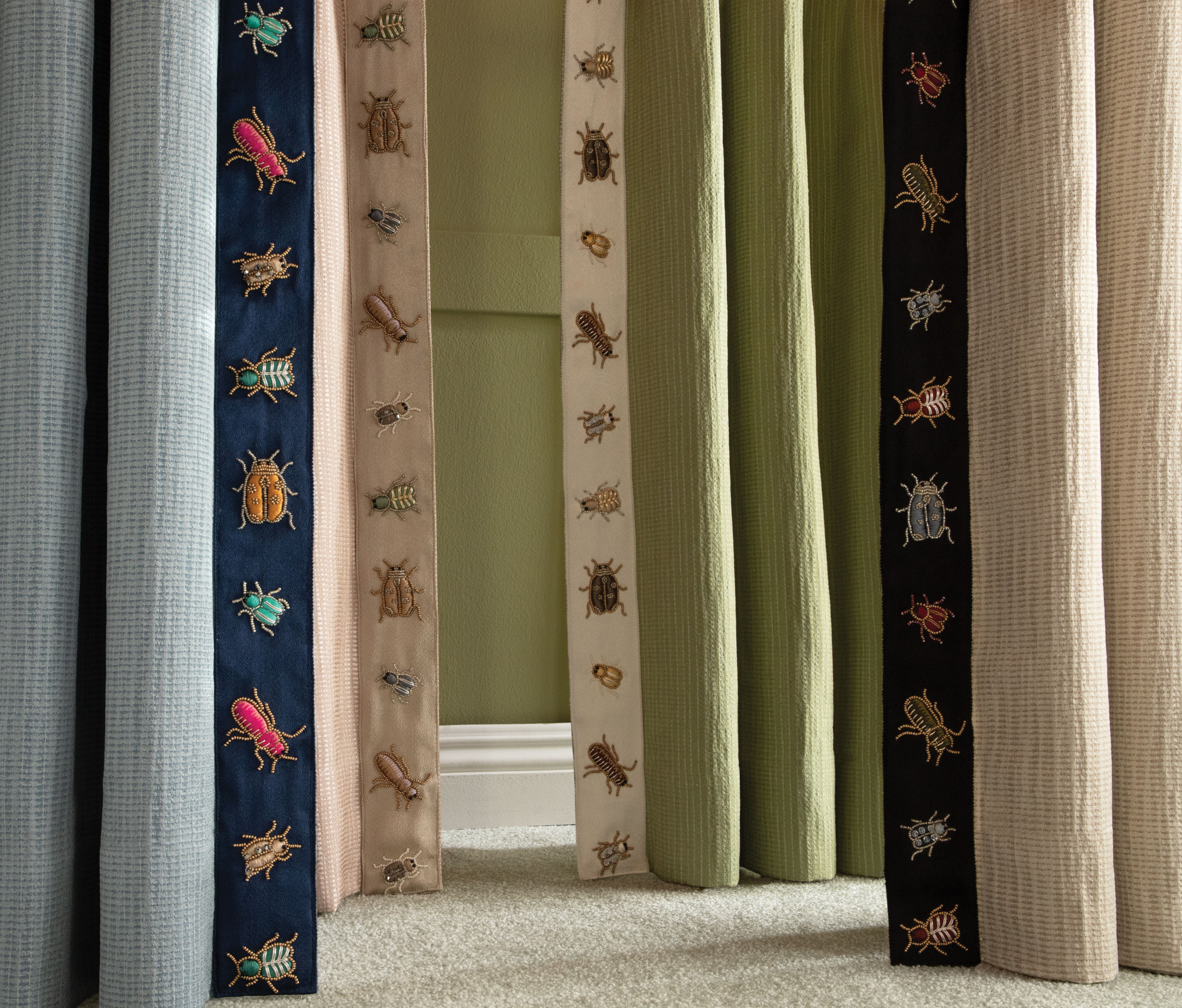
There are so many fabulous ways to add a twist to curtains – a flash of colour on the underside of the fabric, for example, or a pelmet in a lively candy stripe. Trims also offer playful ways to upgrade your drapes. ‘Borders and braids have the ability to introduce new patterns and contrasting colours along the leading edge of curtain panels, while tassel, bullion or beaded fringes can soften the panels edges, add a sense of refinement, infuse a new colour palette, and seamlessly bridge indoor ambiance with the outdoor vista,’ explains Marisa Gutmacher.
Here, the Ensemble beaded border from the Metamorphosis collection, designed by Lori Weitzner, add a whimsical and unexpected edge to simple drapes, the beaded outline of the insects making them glitter like jewels.
4. Turn off-the-shelf cushions into bespoke accessories
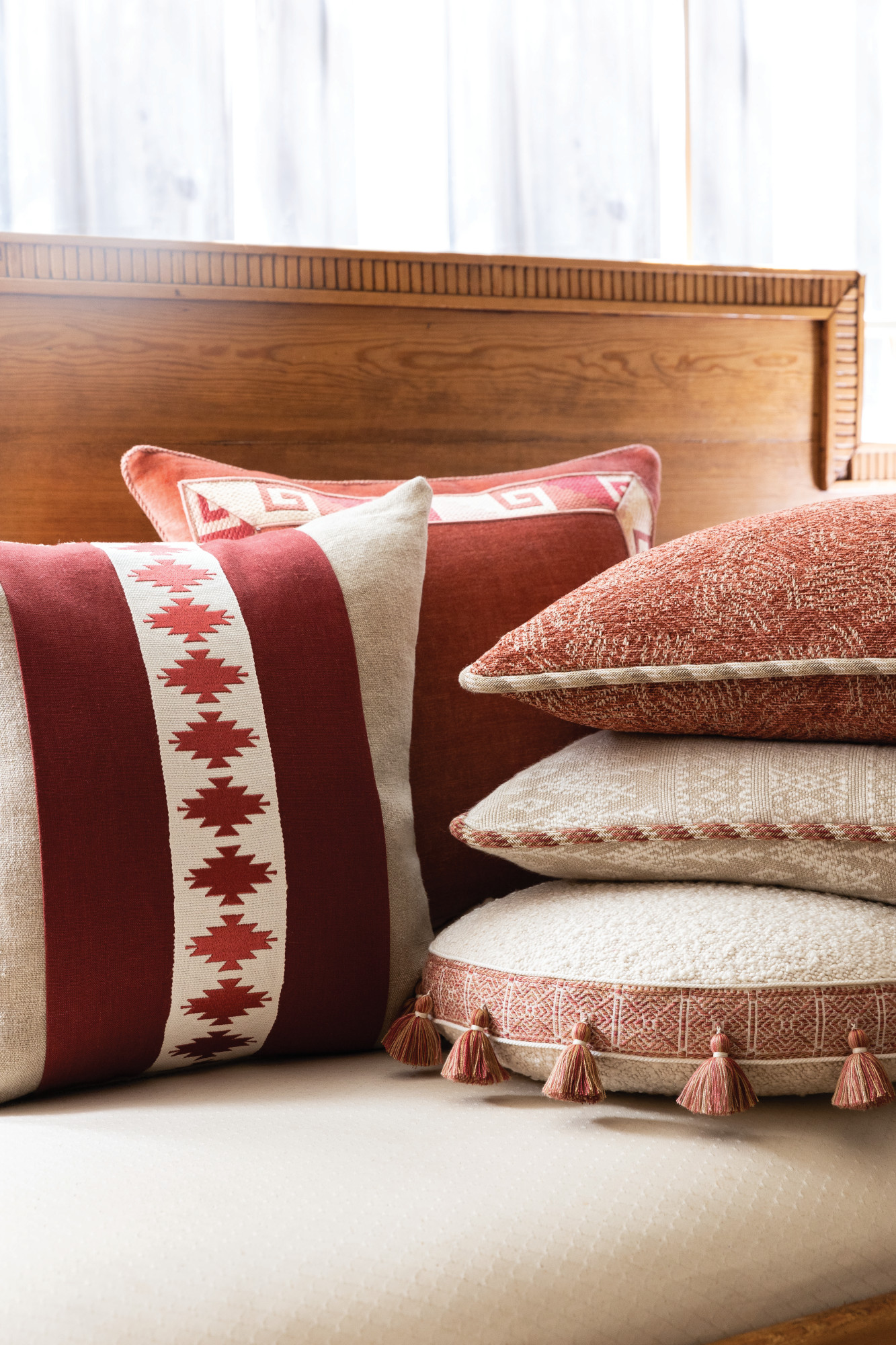
If you prefer to dip your toe into the world of decorative trimming before trying some of these ideas out, cushions are a great low-stakes, high-reward place to start. You can test out colour, pattern and fabric combinations before applying them to bigger pieces like upholstery – plus, of course, at the end of it you’ll have an accessory that’s beautiful and completely one-of-a-kind.
We love the look of a retro-style brush fringe on a velvet base – try the Sophie brush fringe from Samuel & Sons – or a simple striped piping on a square-edged throw pillow. Embroidered geometric patterns are a great way to add a contemporary spin: run them down the middle of a cushion as a stripe, or around the edge as an elegant border. Or, of course, you can mix and match – amongst the trims pictured here are the Abiquiu and Mojave borders from the Taos collection. Just use a common colour thread to keep things cohesive and you’ll have a joyful collection of accessories to bring instant character to your space.
5. Upgrade dining chairs with fun finishes
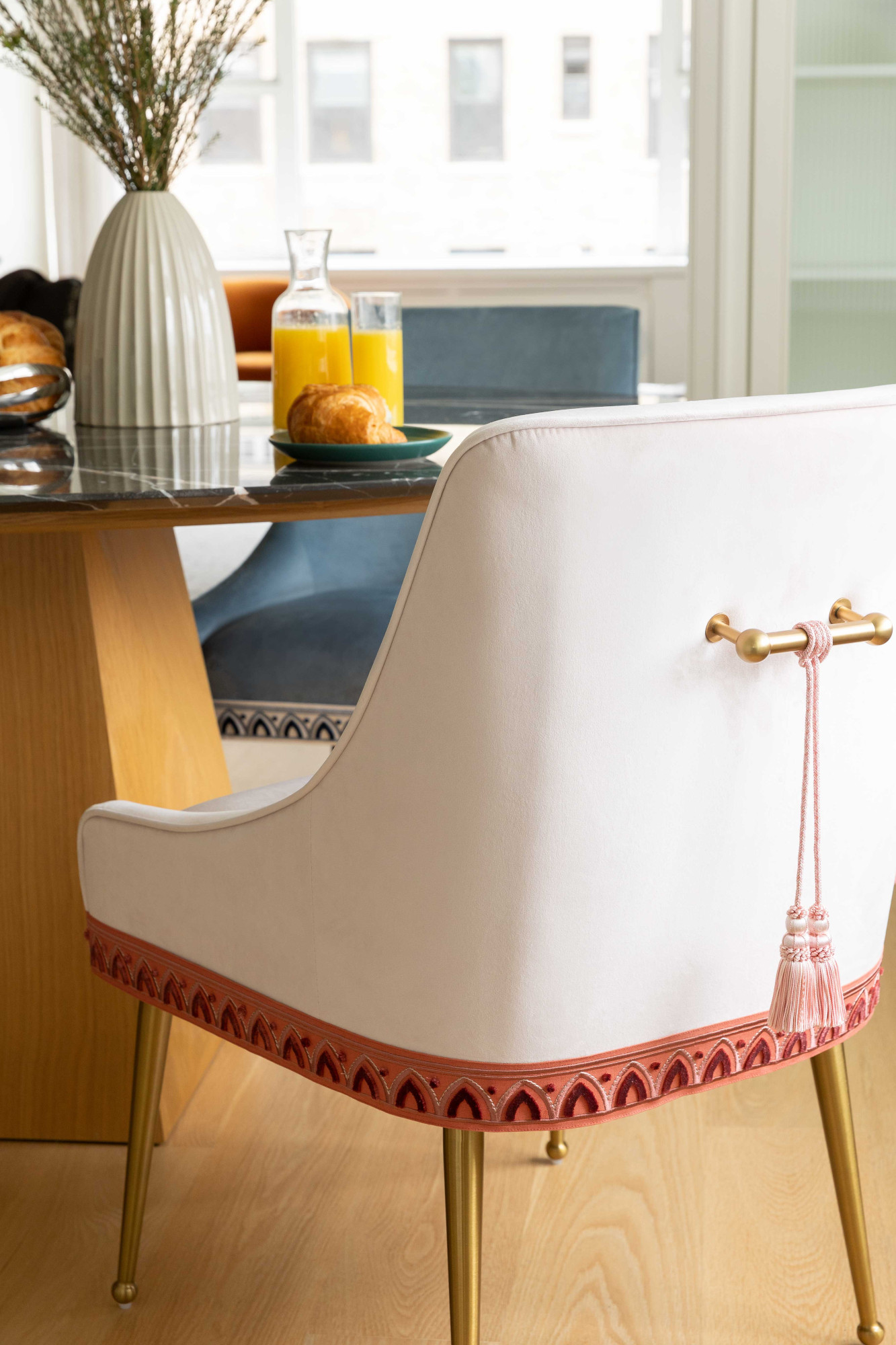
Who said the fun had to stop at your tablecloth? With so few soft furnishings, the dining room can be one of the most difficult spaces into which to introduce pattern, but by embellishing furniture with decorative trimming, you can create a layered and sophisticated scheme. Plus, as Milton De Paul explains, ‘Using trimmings is also a great solution when you’re not ready to commit to permanent upholstery.’ Chair ties or slip covers on dining chairs, for example, add a decorative finish, ‘without the hassle of a full overhaul.’
In this space, the Atelier collection from Samuel & Sons – a series of geometric borders inspired by architectural and Art Nouveau influences – takes centre stage, with dining chairs finished in exquisite Alessia velvet borders. The Le Jardin chair tassel tied to the back of the seats adds a playful touch.
To find out more about their full collection of luxury trimmings, visit the Samuel & Sons website.
Sign up to the Homes & Gardens newsletter
Design expertise in your inbox – from inspiring decorating ideas and beautiful celebrity homes to practical gardening advice and shopping round-ups.
Ellen is the deputy editor of Livingetc, sister title of Homes & Gardens. Since 2017 she's been writing about contemporary interiors, interviewing top designers and getting their advice on how to create a truly stylish home. She's also written for titles like Real Homes and Gardeningetc, covering everything from home renovation to planting advice, and has a keen interest in architecture, responsible design and shopping local and independent.
-
 How to grow sassafras – for a low-maintenance native tree that can even be planted in shady yards
How to grow sassafras – for a low-maintenance native tree that can even be planted in shady yardsFor an easy-to-grow North American tree, you will not find much better than sassafras
By Thomas Rutter
-
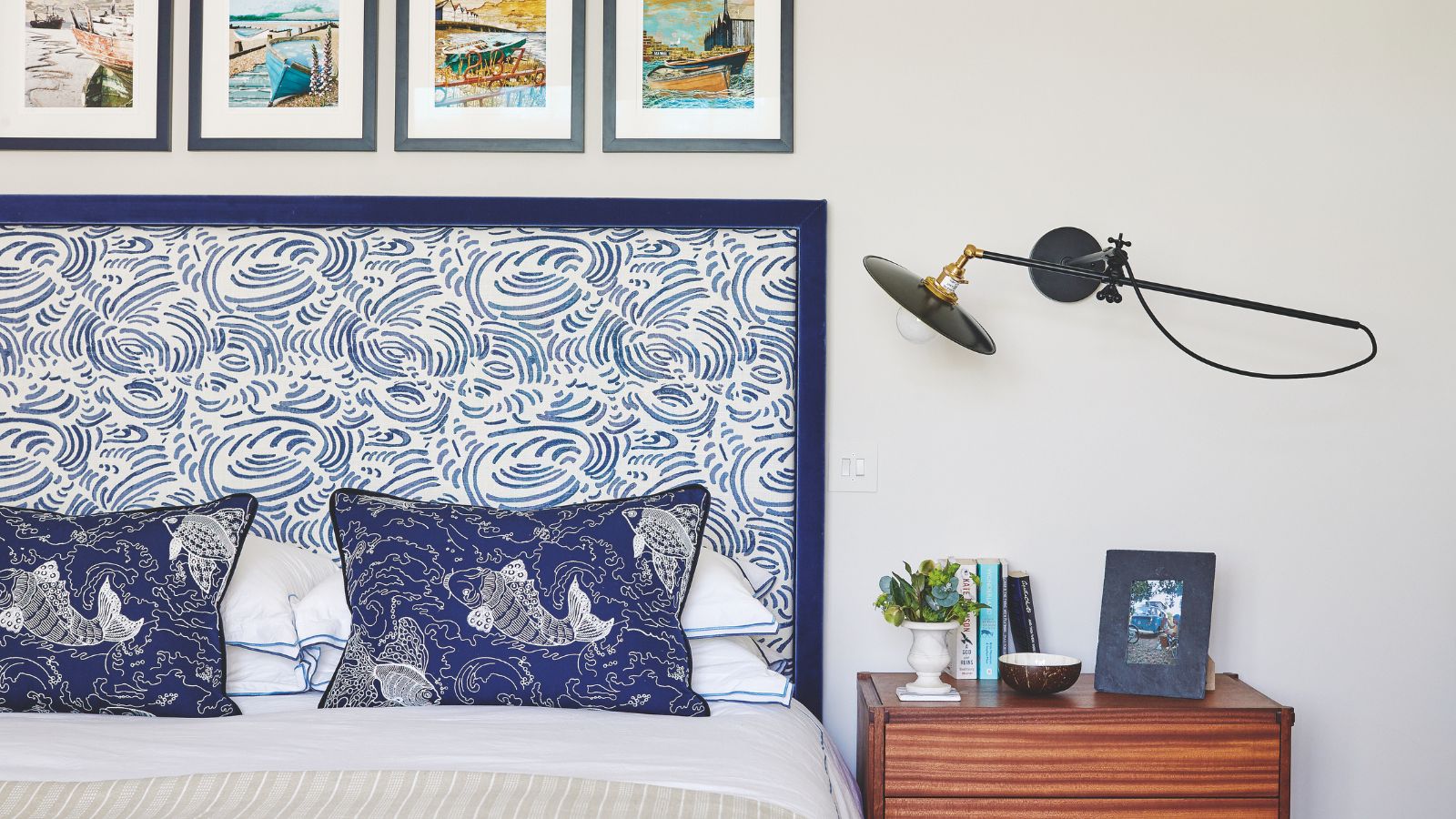 'Big results before you know it' – Experts urge you to use the ‘Take Away 10’ method for simple decluttering with zero decision fatigue
'Big results before you know it' – Experts urge you to use the ‘Take Away 10’ method for simple decluttering with zero decision fatigueIt can cut hundreds of items from your home in just a few weeks
By Ottilie Blackhall